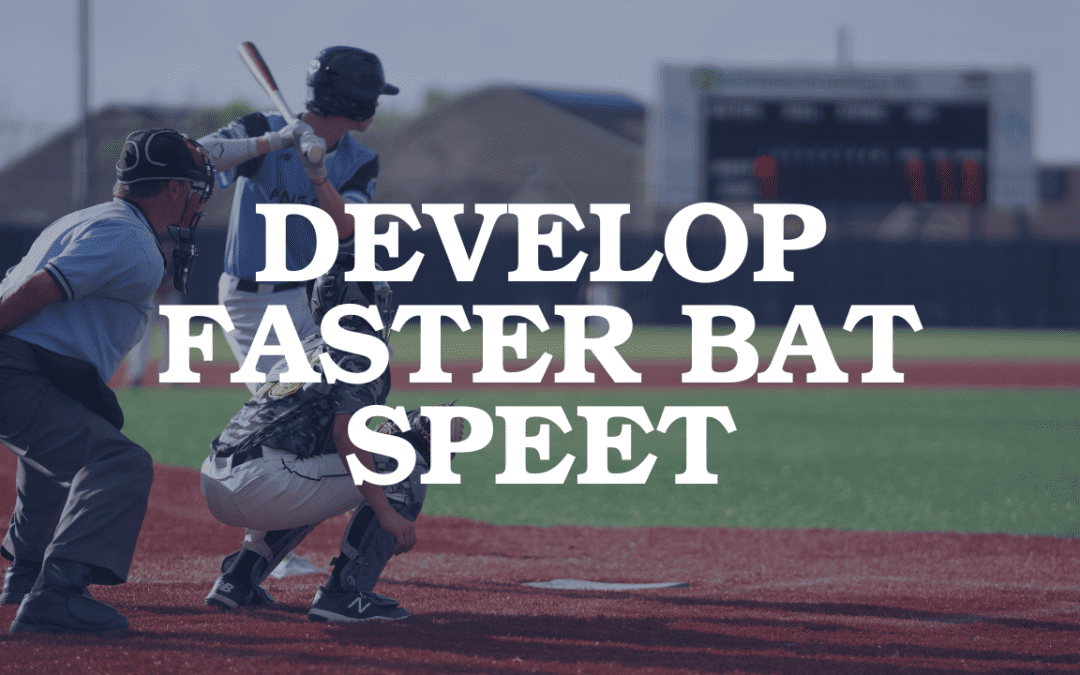The ability to generate a faster bat exit speed is a crucial aspect of hitting in baseball. A faster bat exit speed allows for a greater chance of making contact with the ball, resulting in a higher likelihood of getting a hit. Developing a faster bat exit speed requires a combination of proper technique, strength training, and mental preparation.
One of the key elements in developing a faster bat exit speed is proper technique. This includes having a proper grip on the bat, a proper stance, and a smooth and efficient swing. A proper grip on the bat allows for maximum control and power, while a proper stance allows for maximum balance and stability. A smooth and efficient swing allows for maximum transfer of energy from the body to the bat. It is important to work with a hitting coach to ensure proper technique is being used. Gameday’s lead hitting coach can help. His name is Rick Eisenberg and he is available for lessons at https://www.road2gameday.com/lessons. Whether you are a beginner or an experienced player needing some tips, we can help.
Strength training is another important aspect of developing a faster bat exit speed. Building upper body strength, particularly in the shoulders and forearms, will help generate more power in the swing. Incorporating exercises such as push-ups, pull-ups, and weighted arm exercises can help increase strength. Additionally, proper core training and conditioning can also help increase bat speed. Our lead Speed and Strength instructor is Alex Achtermann and we have a complete Performance program that can assist in developing bat speed: https://www.road2gameday.com/gameday-performance
Let’s break down the three most important areas to strengthen, and let’s start with the shoulders.
There are several ways to develop strength in the shoulders:
-
Resistance training exercises: This includes exercises such as shoulder presses, lateral raises, and front raises, which target the deltoid muscles in the shoulders. These exercises can be done using dumbbells, barbells, resistance bands, or cable machines.
-
Pull-ups and chin-ups: These exercises target the muscles in the shoulders, particularly the rear deltoids, as well as the upper back.
-
Rotator cuff exercises: The rotator cuff muscles in the shoulders are important for stability and injury prevention. Exercises such as external rotations, internal rotations, and reverse flyes can help strengthen these muscles.
-
Overhead exercises: Exercises such as overhead presses and overhead squats can help increase strength in the shoulders.
-
Plyometrics: Plyometric exercises, such as medicine ball throws, can improve power and explosiveness in the shoulders.
It is important to note that when working on strength training, it’s crucial to use proper form, start with light weight or no weight, and gradually increase the resistance as you improve. It’s also a good idea to consult a professional trainer or physical therapist to ensure you’re using the right exercises for your specific needs and that you’re not risking any injury.
Incorporating a variety of exercises that target different parts of the shoulders can help develop overall strength and stability in the joint, which can help prevent injury and improve performance in sports and other physical activities.
Another part of your body to strengthen is your forearms and there are several ways to develop strength in the forearms:
-
Wrist extensions and wrist flexions: These exercises can be done using dumbbells, resistance bands, or a cable machine. They target the muscles on the top and bottom of the forearms, respectively.
-
Reverse wrist curl: This exercise targets the muscles on the back of the forearms. It can be done with a barbell or a dumbbell, and can be done seated or standing.
-
Gripper exercises: Using hand grippers or a similar device can help increase strength in the forearms.
-
Farmer walks: Carrying heavy weights for a short distance can help develop grip and forearm strength.
-
Pull-ups and chin-ups: These exercises target not only the shoulders and back, but also the forearms.
-
Rock climbing: Rock climbing can be a fun way to develop forearm strength, as well as grip strength, by using the muscles to hold onto the rock.
Lastly, developing your core muscles, which include the muscles of the abdominal and lower back, is essential for overall fitness and can help improve stability and performance in many physical activities. Here are several ways to develop your core:
-
Planks: Planks are a great exercise for strengthening the core muscles. They can be done in a variety of positions, such as the traditional front plank, side plank, and reverse plank.
-
Crunches and sit-ups: Crunches and sit-ups are classic exercises that target the abdominal muscles. They can be done with or without weights to increase resistance.
-
Russian twists: This exercise targets the oblique muscles, which are located on the sides of the abdominal area.
-
Leg raises: This exercise targets the lower abdominal muscles and can be done in a variety of positions, such as hanging leg raises or lying leg raises.
-
Deadlifts: This exercise targets the entire core and lower back, as well as the legs and glutes.
-
Yoga and Pilates: Yoga and Pilates can help to strengthen the core by focusing on balance, stability, and control.
-
Rowing machine : Rowing machine is a low-impact exercise that targets the entire core, in addition to the legs, back, and arms.
A question we get asked a lot is what is the average Bat Speed of a youth, high school, college and professional player. We’ve studied thousands of players over the years and her’s what we have found.
The average bat exit speed for a youth player will vary depending on their age, skill level, and size. An average bat exit speed for a 12 year old is 50-60 MPH.
For high school players, the average exit speed is around 85-90 mph. Some of the elite high school players can reach speeds of up to 95 mph.
In college, the average exit speed increases to around 90-95 mph. Some of the elite college players can reach speeds of up to 100 mph.
In Major League Baseball (MLB), the average exit speed is around 90-95 mph. However, some of the best power hitters in the league can reach speeds of up to 110 mph.
It’s important to note that these are just averages, and there are many variations among players at each level. Some players may have higher or lower exit speeds than the averages provided above. Additionally, exit speed is just one aspect of hitting and it’s not the only thing that determines the success of a player. A player with a higher exit speed doesn’t guarantee that he’ll be a better player than one with lower exit speed. Other factors such as bat control, approach, and mechanics can also play a big role in a player’s success.
So, who has the highest bat exit speed in the Major Leagues?
122.4 MPH exit velocity! Oneil Cruz of the Pittsburgh Pirates just hit the hardest-hit batted ball in Statcast era history in 2022. Before that, the highest recorded bat exit speed in Major League Baseball (MLB) belongs to Giancarlo Stanton, who hit a home run with a exit velocity of 121.7 mph on June 6, 2016. He achieved this record while playing for the Miami Marlins. However, it’s worth noting that this record was set with the help of the Statcast technology, which was introduced in 2015 by MLB. It’s a system that uses high-resolution cameras and radar to track and measure various aspects of the game, including the exit speed of the ball off the bat. Before this technology, exit velocity was not tracked, so it’s not possible to know who held the record before that.


